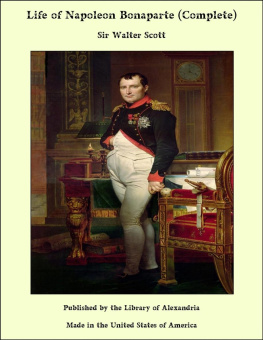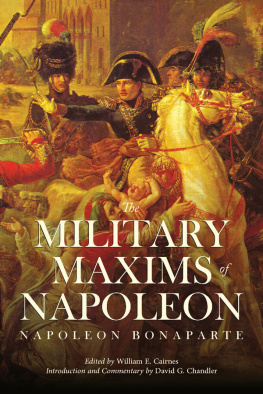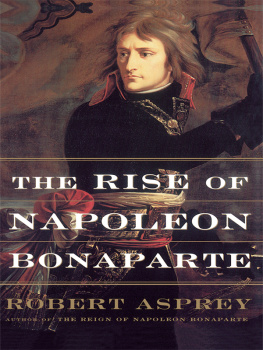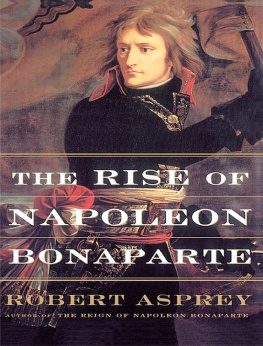CHAPTER LXXV.
Buonaparte marches upon Blucher, who is in possession of SoissonsAttacks the place without successBattle of CraonneBlucher retreats on LaonBattle of LaonNapoleon is compelled to withdraw on the 11thHe attacks Rheims, which is evacuated by the RussiansDefeat at Bar-sur-Aube of Oudinot and Gerard, who, with Macdonald, are forced to retreat towards ParisSchwartzenberg wishes to retreat behind the Aubebut the Emperor Alexander and Lord Castlereagh opposing the measure, it is determined to proceed upon ParisNapoleon occupies ArcisBattle of ArcisNapoleon is joined, in the night after the battle, by Macdonald, Oudinot, and Gerardand retreats along the Aube.
The sword was now again brandished, not to be sheathed or reposed, until the one party or the other should be irretrievably defeated.
The situation of Buonaparte, even after the victory of Montereau, and capture of Troyes, was most discouraging. If he advanced on the grand army of the allies which he had in front, there was every likelihood that they would retire before him, wasting his force in skirmishes, without a possibility of his being able to force them to a general action; while, in the meantime, it might be reckoned for certain that Blucher, master of the Marne, would march upon Paris. On the contrary, if Napoleon moved with his chief force against Blucher, he had, in like manner, to apprehend that Schwartzenberg would resume the route upon Paris by way of the valley of the Seine. Thus, he could make no exertion upon the one side, without exposing the capital to danger on the other.
After weighing all the disadvantages on either side, Napoleon determined to turn his arms against Blucher, as most hostile to his person, most rapid in his movements, and most persevering in his purposes. He left Oudinot, Macdonald, and Gerard in front of the grand army, in hopes that, however inferior in numbers, they might be able to impose upon Schwartzenberg a belief that Napoleon was present in person, and thus either induce the Austrian to continue his retreat, or at least prevent him from resuming the offensive. For this purpose the French troops were to move on Bar-sur-Aube, and occupy, if practicable, the heights in that neighbourhood. The soldiers were also to use the cry of Vive l'Empereur, as if Napoleon had been present. It was afterwards seen, that as the marchals did not command 40,000 men in all, including a force under Macdonald, it was impossible for them to discharge effectually the part assigned them. In the meanwhile, Napoleon himself continued his lateral march on Blucher, supposing it possible for him, as formerly, to surprise his flank, as the Prussians marched upon Paris. For this purpose he moved as speedily as possible to La Fert-Gauchre, where he arrived 1st March; but Sacken and D'Yorck, who would have been the first victims of this manuvre, as their divisions were on the left bank of the Marne, near to Meaux, crossed the river at La Fert Jouarre, and formed a junction with Blucher, who now resolved to fall back on the troops of Bulow and Winzengerode. These generals were, it will be remembered, advancing from the frontiers of Belgium.
A sudden hard frost rendered the country passable, which had before been in so swampy a condition as to render marching very difficult. This was much to the advantage of the Prussians. Napoleon detached the forces under Marmont and Mortier, whom he had united with his own, to press upon and harass the retreat of the Prussian field-marchal; while he himself, pushing on by a shorter line, possessed himself of the town of Fismes, about half way betwixt Rheims and Soissons. The occupation of this last place was now a matter of the last consequence. If Blucher should find Soissons open to him, he might cross the Marne, extricate himself from his pursuers without difficulty, and form his junction with the army of the North. But if excluded from this town and bridge, Blucher must have hazarded a battle on the most disadvantageous terms, having Mortier and Marmont on his front, Napoleon on his left flank, and in his rear, a town, with a hostile garrison and a deep river.
It was almost a chance, like that of the dice, which party possessed this important place. The Russians had taken it on 15th February; but, being immediately evacuated by them, it was on the 19th occupied by Mortier, and garrisoned by 500 Poles, who were imagined capable of the most determined defence. On the 2d March, however, the commandant, intimidated by the advance of Bulow's army of 30,000 men, yielded up Soissons to that general, upon a threat of an instant storm, and no quarter allowed. The Russian standards then waved on the ramparts of Soissons, and Blucher, arriving under its walls, acquired the full power of uniting himself with his rear-guard, and giving or refusing battle at his pleasure, on the very moment when Buonaparte, having turned his flank, expected to have forced on him a most disadvantageous action.
The Emperor's wrath exhaled in a bulletin against the inconceivable baseness of the commandant of Soissons, who was said to have given up so important a place when he was within hearing of the cannonade on the 2d and 3d, and must thereby have known the approach of the Emperor. In the heat of his wrath, he ordered Soissons to be assaulted and carried by storm at all risks; but it was defended by General Langeron with 10,000 Russians. A desperate conflict ensued, but Langeron retained possession of the town.
BATTLE OF CRAONNE.
Abandoning this project, Napoleon crossed the Aisne at Bry-au-Bac, with the purpose of attacking the left wing of Blucher's army, which, being now concentrated, was strongly posted betwixt the village of Craonne and the town of Laon, in such a manner as to secure a retreat upon the very strong position which the latter town affords. Blucher imagined a manuvre, designed to show Buonaparte that his favourite system of turning an enemy's flank had its risks and inconveniences. He detached ten thousand horse under Winzengerode, by a circuitous route, with orders that when the French commenced their march on Craonne, they should move round and act upon their flank and rear. But the state of the roads, and other impediments, prevented this body of cavalry from getting up in time to execute the intended manuvre.
Meanwhile, at eleven in the morning of the 7th March, the French began their attack with the utmost bravery. Ney assaulted the position on the right flank, which was defended by a ravine, and Victor, burning to show the zeal which he had been accused of wanting, made incredible exertions in front. But the assault was met by a defence equally obstinate, and the contest became one of the most bloody and best-sustained during the war. It was four in the afternoon, and the French had not yet been able to dislodge the Russians on any point, when the latter received orders from Blucher to withdraw from the disputed ground, and unite with the Prussian army on the splendid position of Laon, which the marchal considered as a more favourable scene of action. There were no guns lost, or prisoners made. The Russians, in despite of a general charge of the French cavalry, retreated as on the parade. As the armies, considering the absence of Winzengerode with the detachment of cavalry, and of Langeron with the garrison of Soissons, were nearly equal, the indecisive event of the battle was the more ominous. The slain and wounded were about the same number on both sides, and the French only retained as a mark of victory the possession of the field of battle.










